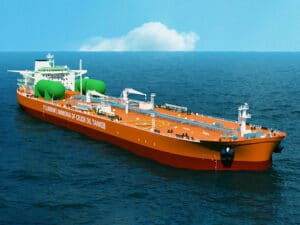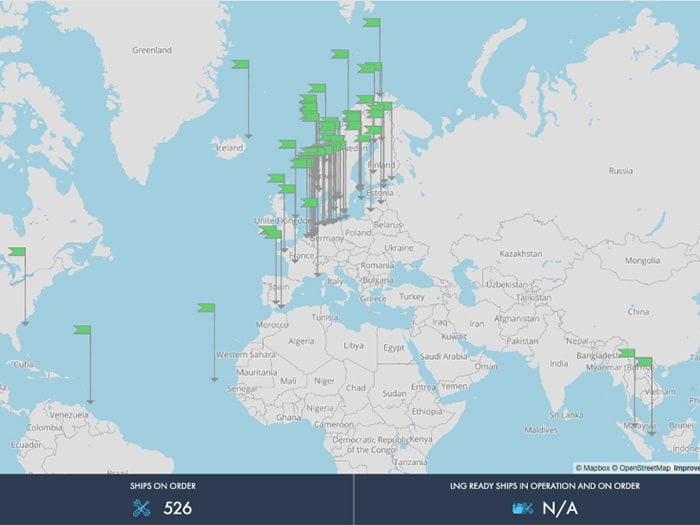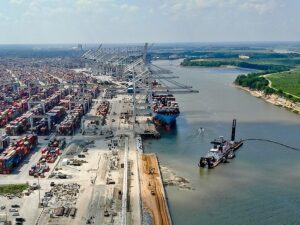
SEA-LNG: Bio-LNG now available in 70 ports worldwide
Written by Nick Blenkey
SEA-LNG’s Bunker Navigator tool shows that bio-LNG is available today in almost seventy ports worldwide, including in Singapore, Rotterdam and on the U.S. East Coast. [Image: SEA-LNG]
The SEA-LNG coalition reports that analysis of the green LNG bunkering market shows that bio-LNG is available today in almost seventy ports worldwide, including in Singapore, Rotterdam and on the U.S. East Coast. The data is revealed in the coalition’s update to its online Bunker Navigator tool, which provides information on the bunker availability of fuels in the LNG pathway worldwide.
Bio-LNG used in the maritime industry is produced from sustainable biomass feedstocks such as human or agricultural waste, which means it does not compete with the production of food, fiber or fodder, as defined by regulations such as the EU’s RED II and the U.S. EPA’s Renewable Fuel Standards.
According to SEA-LNG, annual production of biomethane, from which bio-LNG is produced, is currently around 30 million tonnes or around 10% of shipping’s total annual energy demand.
The 355 LNG-fueled vessels, excluding LNG carriers, in the global world fleet are all capable of using bio-LNG as drop-in fuel without any modification. Bio-LNG can also be transported, stored and bunkered in ports using the existing LNG infrastructure, providing a route to further expansion of its availability in coming years.
“In general, the use of bio-LNG as a marine fuel can reduce GHG emissions by up to 80% compared to marine diesel on a full well-to-wake basis,” says SEA-LNG. “Depending on the method of production, bio-LNG can have net-zero or even net-negative GHG emissions on a lifecycle basis, creating immediate opportunities for vessel operators to cut GHG emissions and offering a sustainable route to decarbonization by 2050.
Commenting on the update to the SEA-LNG Bunker Navigator, Adi Aggarwal, general manager of SEA-LNG said: “The fact that bio-LNG is commercially available now and being used as a drop-in marine fuel by operators in Europe, North America and Asia, demonstrates the sustained contribution that the LNG pathway can make to decarbonizing our industry, starting today. Climate change is a stock and flow problem, the longer our industry waits to start using low-carbon fuels, the tougher the decarbonization challenge will be.”




